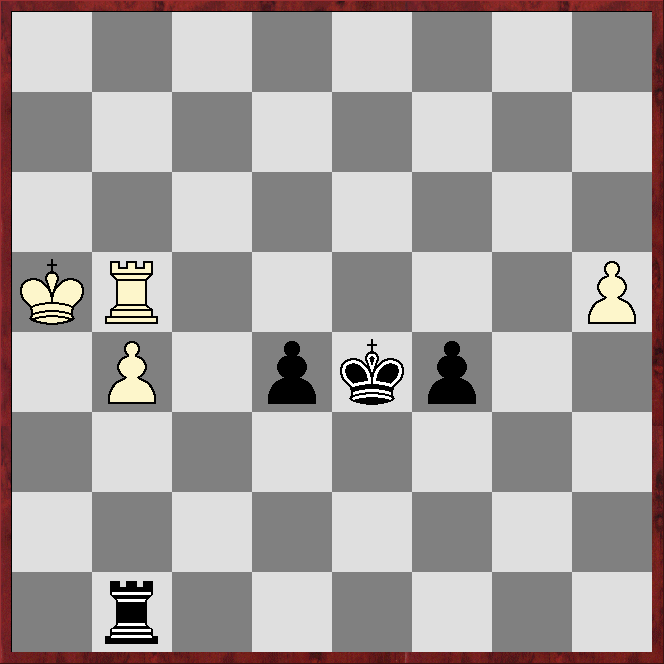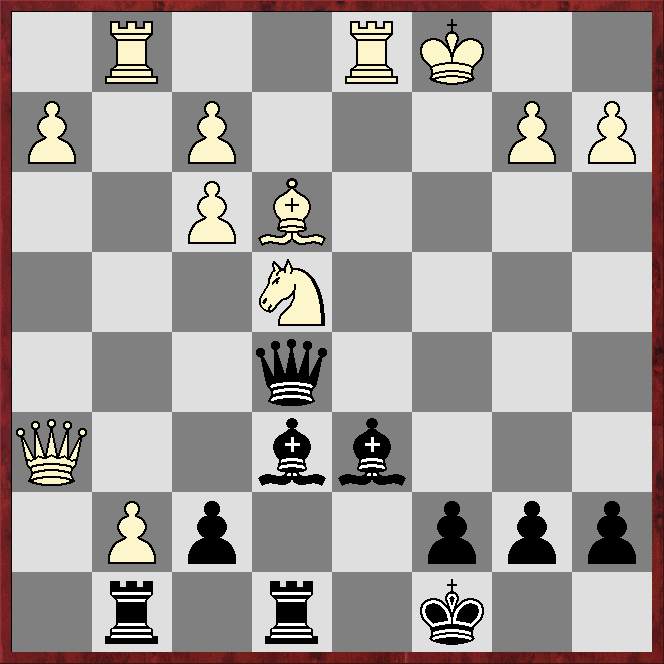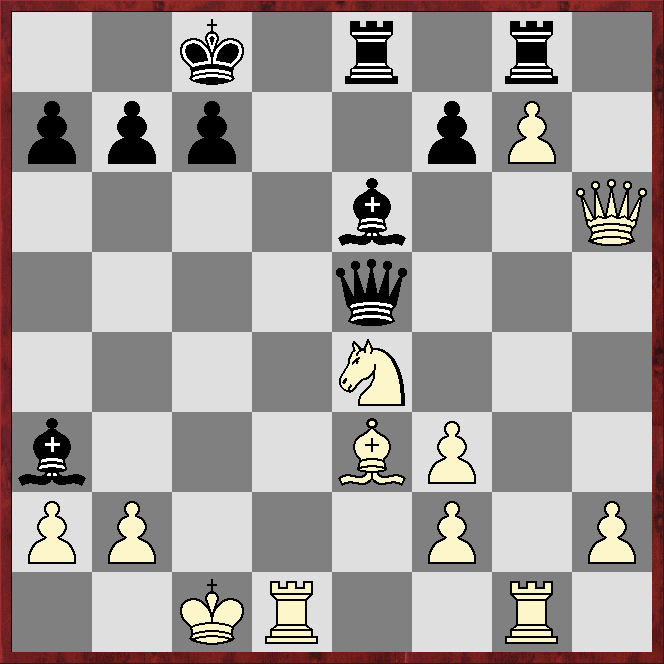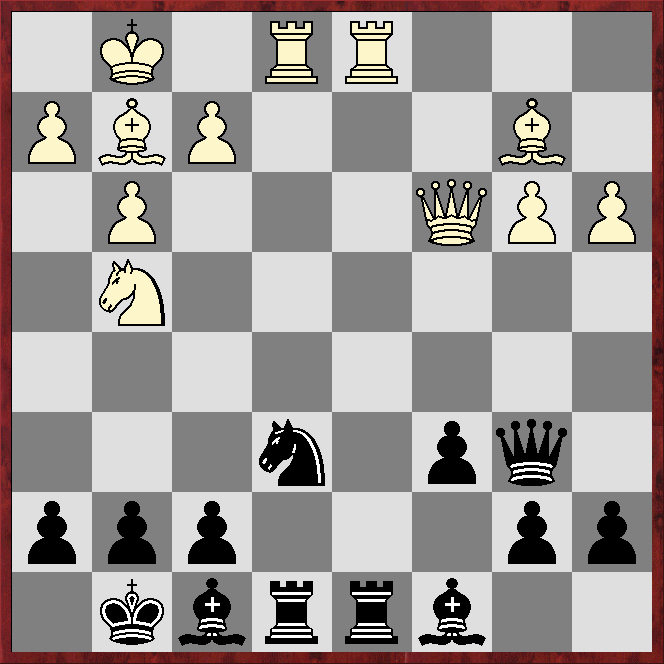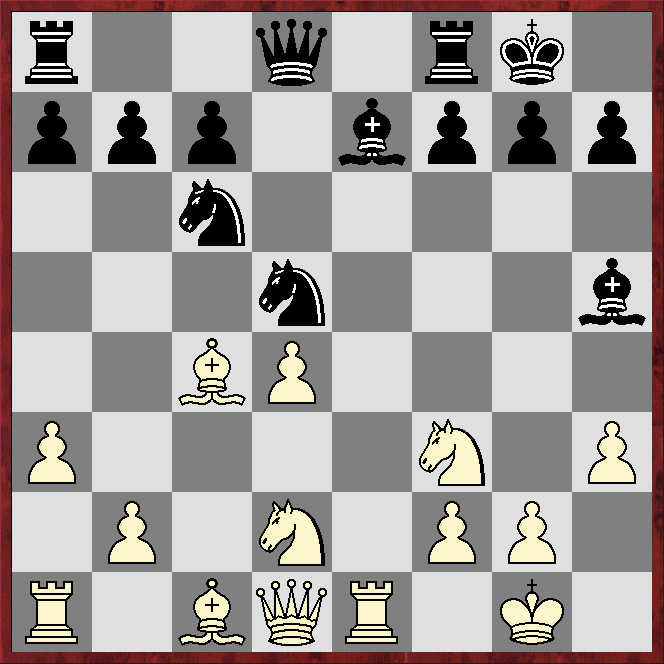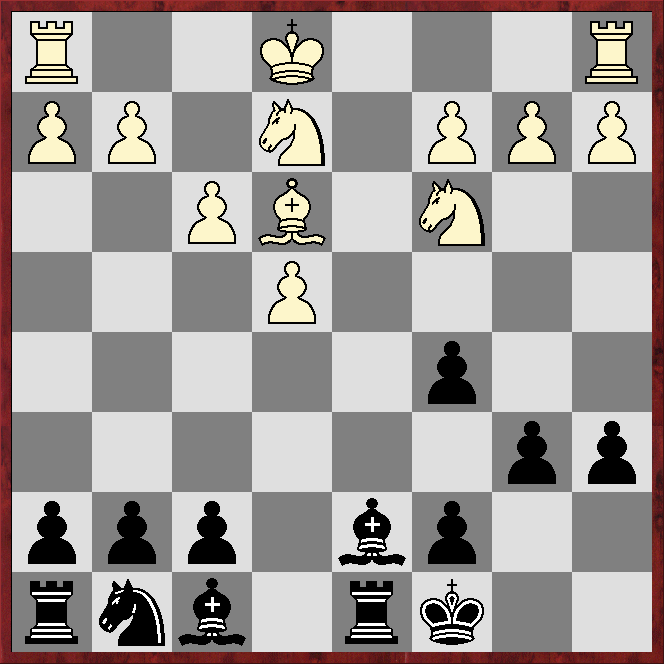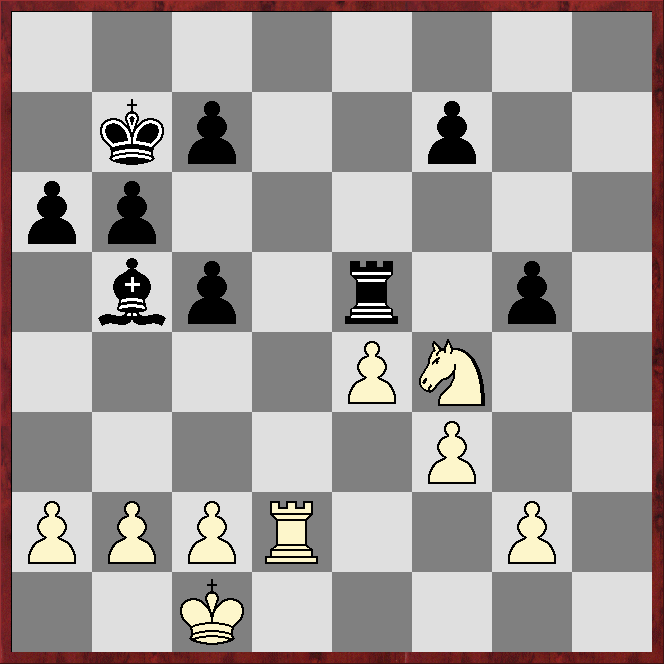IN this occasional series I am looking at the statistically best way to play against popular opening lines.
The numbers are drawn from the 2021 edition of ChessBase's Mega database, ignoring, where possible, those results that include very few games and so are statistically insignificant.
After 1.e4 c5 2.Nf3, Black's most-popular continuation is 2...d6.
White's commonest third moves are 3.d4, which scores 52%, and 3.Bb5+, which scores 51%.
Most other moves, including 3.g3, 3.Bc4, 3.Nc3, 3.b4 and 3.d3, score under 50% - in other words, in those lines, from a statistical view, Black already has an edge.
But there is one move that beats all these by scoring a respectable 54%, and that is 3.c3, which is a delayed form of the Sicilian Alapin: 1.e4 c5 2.c3.
One point about playing the Alapin in this delayed form is that Black's most-popular answer to 2.c3, namely 2...d5, is effectively ruled out as, after 1.e4 c5 2.Nf3 d6 3.c3 d5?! Black is a tempo down on normal lines.
Similarly, another popular response to the Alapin, 2...e6, which is usually a prelude to playing ...d5 in one move, also looks a little strange if played in the move-order 1.e4 c5 2.Nf3 d6 3.c3 e6.
 |
| Position after 3.c3 |
Black has eight replies that occur more than 100 times in Mega21 and, despite what I have written above, they include ...d5 and ...e6.
A) 3...Nf6 (22,511 games)
After 4.h3 (this and 4.g3 score equally well, but h3 is preferred by Stockfish13 and Komodo12.1.1), the line splits.
A1 4...Nc6 (there are 80 games in Mega21 that saw 4...Nxe4?? 5.Qa4+) 5.Bd3, after which the line splits again.
A1.1 5...g6 6.0-0 Bg7 7.Bc2 0-0 8.d4 cxd4 9.cxd4, when A1.1a 9...Nb4 10.Bb3 d5 (not 10...Nxe4?? 11.Qe1) 11.e5 Ne4 12.Re1 scores 68% for White, albeit from a small sample, A1.1b 9...e5 10.d5 Nb4 11.Bb3 a5 12.Nc3 Bd7 13.a3 Na6 14.Be3 scores 86% for White, albeit from a small sample, and A1.1c 9...d5 10.e5 Ne4 11.Re1 Bf5 12.Nc3 scores 75% for White, albeit from a very small sample.
A1.2 5...d5 6.exd5!?, when A1.2a 6...Qxd5 7.Qe2 Bf5 8.Bc4 scores 60% for White, and A1.2b 6...Nxd5 7.0-0 g6 8.Bb5 scores 60% for White, albeit from a small sample.
A1.3 5...e6 6.0-0 Be7 7.Re1 0-0 8.Bc2 scores 77% for White, albeit from a small sample.
A2 4...g6 5.Bd3 Bg7 6.Bc2 (this and 6.0-0 score equally well, but the bishop move is narrowly preferred by the engines, although the lines often transpose anyway), after which the line splits again.
A2.1 6...0-0 7.0-0, when A2.1a 7...Nc6 is a transposition to A1.1, and A2.1b 7...e5 8.d3 Nc6 9.a3 scores 71% for White.
A2.2 6...Nc6 7.d4 cxd4 8.cxd4, when A2.2a 8...0-0 9.Nc3 e5 10.dxe5!? scores 67%, albeit from a small sample, and A2.2b 8...d5 9.e5 Ne4 10.0-0 0-0 is a transposition to A1.1c.
A2.3 6...e5 7.0-0 0-0 is a transposition to A2.1b.
A3 4...Nbd7 5.Bd3, after which the line splits again.
A3.1 5...b6 6.0-0 Bb7 7.Re1, when A3.1a 7...Qc7 8.Bc2 Rc8 9.Na3!? e6 10.d4 scores 56% for White, A3.1b 7...Rc8 8.Qe2!? scores 70% for White, albeit from a small sample, and A3.1c 7...e6 8.Bc2 Be7 9.d4 scores 64% for White.
A3.2 5...g6 6.Bc2 Bg7 7.d4 0-0 8.0-0, when A3.2a 8...Qc7 9.Qe2 scores 69% for White, albeit from a small sample, A3.2b 8...b6 9.e5 scores 75% for White, albeit from a small sample, and A3.2c 8...e5, following which White scores 63% with both 9.dxe5 and 9.Re1, albeit from small samples.
A4 4...e6 5.Bd3, after which the line splits again.
A4.1 5...Be7 6.0-0 0-0 7.Re1 scores 100% for White, albeit from a small sample.
A4.2 5...Nc6 is a transposition to A1.3.
A5 4...Bd7 5.Bd3, after which the line splits again.
A5.1 5...Bc6 6.Qe2 Nbd7 7.Bc2 scores 63% for White.
A5.2 5...Nc6 6.Bc2 Rc8 7.0-0 g6 8.d4 scores 75% for White, albeit from a small sample.
A5.3 5...g6 6.0-0 Bg7 7.Bc2 0-0 8.d4 scores 64% for White.
B) 3...Nc6 (1,359 games)
After 4.d4 the line splits.
B1 4...cxd4 5.cxd4, after which the line splits again.
B1.1 5...Nf6 6.Nc3, when B1.1a 6...g6 7.h3 Bg7 8.Bd3 0-0 9.0-0 e5 10.dxe5 dxe5 11.Be3 scores 67% for White, B1.1b 6...e6 7.Bd3 Be7 8.0-0 0-0 9.h3 scores 74% for White and B1.1c 6...Bg4 7.d5!? Ne5 8.Nxe5! dxe5 (Black loses a piece after 8...Bxd1? 9.Bb5+ Nd7 10.Bxd7+ Qxd7 11.Nxd7) 9.Qb3 scores 100% for White, albeit from a small sample.
B1.2 5...e6 6.Nc3, when B1.2a 6...Nf6 is a transposition to B1.1b, and B1.2b 6...a6 7.Bd3 Nf6 8.0-0 Be7 9.Re1 scores 90% for White.
B1.3 5...Bg4 6.d5!?, when B1.3a 6...Ne5? (Black's most-popular move, but it loses immediately) 7.Nxe5! Qa5+ (7...Bxd1 8.bb5+ etc) 8.Bd2 scores 100% for White, B1.3b 6...Bxf3 7.gxf3!? scores 95% for White, albeit from a small sample, and B1.3c 6...Nb8 7.Nc3 scores 100% for White, albeit from a very small sample.
B1.4 5...g6 6.d5!?, when B1.4a 6...Ne5 7.Nxe5 dxe5 8.Nc3 scores 88% for White, albeit from a small sample, and B1.4b 6...Nb8 7.Bb5+ scores 100% for White, albeit from a small sample.
B2 4...Nf6 5.d5 Nb8 6.Bg5 scores 69% for White, albeit from a small sample.
B3 4...Bg4 5.d5, after which the line splits again.
B3.1 5...Ne5? 6.Nxe5 Bxd1 7.Bb5+ Qxd7 8.Bxd7+ scores 100% for White, albeit from a small sample.
B3.2 5...Nb8 6.h3 Bxf3 7.Qxf3 scores 88% for White, albeit from a small sample.
B3.3 5...Bxf3 6.Qxf3 Ne5 reaches a position in which White scores 100% with 7.Qe3, 7.Qd1 and 7.Qg3, albeit from very small samples.
C) 3...g6 (638 games)
After 7.d4 cxd4 8.Qxd4!? Nf6 9.e5 the line splits.
C1 9...dxe5 10.Qxd8+ Kxd8 11.Nxe5 Be6 12.Na3 White scores 86%, albeit from a small sample.
C2 9...Nc6 10.Bb5, when the line splits again.
C2.1 10...Nh5 reaches a position that occurs only three times in Mega21. The engines agree White has the upper hand after 11.0-0.
C2.2 10...dxe5 11.Bxc6+ bxc6 12.Qxd8+ Kxd8 13.Nxe5 scores 83% for White, albeit from a very small sample.
D) 3...e6 (295 games)
After 4.d4 cxd4 5.cxd4 Nf6 6.Bd3!? the line splits.
D1 6...Be7 7.Nc3, after which the line splits again.
D1.1 7...0-0 8.0-0, when D1.1a 8...Nc6 is a transposition to B1.1b, and D1.1b 8...a6 9.Qe2 Nc6 10.e5 scores 89% for White.
D1.2 7...Nc6 is a transposition to B1.1b.
D2 6...Nc6 7.0-0 Be7 8.Nc3 is a transposition to B1.1b.
E) 3...a6 (159 games)
After 4.d4 the line splits.
E1 4...Nd7 5.Bd3 after which the line splits again.
E1.1 5...g6 6.0-0 Bg7 7.a4 scores 79% for White, albeit from a small sample.
E1.2 5...e6 6.0-0 when E1.2a 6...Ngf6 7.Qe2 scores 90% for White, albeit from a small sample, and E1.2b 6...Ne7 reaches a position in Mega21 in which White scores 75% with both 7.Nbd2 and 7.b4, albeit from very small samples.
E1.3 5...Qc7 6.0-0 Ngf6 7.Qe2 scores 69% for White, albeit from a small sample.
E1.4 5...e5 6.dxe5!? scores 75% for White, albeit from a small sample.
E1.5 5...b5 6.0-0 Bb7 7.a4 c4 8.Bc2 scores 75% for White, albeit from a small sample.
F) 3...e5!? (150 games)
After 4.d4 the line splits.
F1 4...cxd4 5.cxd4, after which the line splits again.
F1.1 5...exd4 6.Nxd4 Nf6 7.Nc3 Be7 8.Bb5+ scores 75% for White, albeit from a small sample.
F1.2 5...Bg4 6.dxe5 Bxf3 7.Qxf3 scores 93% for White, albeit from a small sample.
F2 4...Qc7 5.dxe5 dxe5 6.Bc4 scores 65% for White.
F3 4...exd4 5.cxd4, after which the line splits again.
F3.1 5...Nf6 6.Nc3 scores 94% for White, albeit from a small sample.
F3.2 5...cxd4 is a transposition to F1.1.
G) 3...Bg4 (115 games)
After 4.d4 cxd4 5.cxd4 Nf6 6.Nc3 White scores 71%, albeit from a small sample.
H) 3...d5?! (108 games)
After 4.exd5 Qxd5 5.d4 the line splits.
H1 5...Nf6 6.Be2 scores 83% for White, albeit from a small sample.
H2 5...Bg4 6.Be2 scores 75% for White, albeit from a small sample.
H3 5...cxd4 6.cxd4 scores 92% for White, albeit from a small sample.




